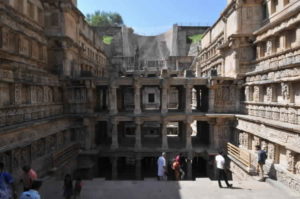
The Reserve Bank on July 19 announced to issue new 100 rupee notes in lavender colour having motif of ‘Rani ki vav’- a stepwell located on the banks of Saraswati river in Gujarat’s Patan.
- According to the central bank , all 100 rupees banknotes issued earlier will also continue to be legal tender.
- The new note has other designs, geometric patterns aligning with the overall colour scheme, both at the obverse and reverse. The new 100 rupees note follows, new notes in the denomination of 10 rupees, 50 rupees and 500 rupees.
About Rani ki vava
- Rani ki Vav was declared UNESCO heritage site in 2014.
- According to the UNESCO, Rani-ki-Vav, on the banks of the Saraswati River, was initially built as a memorial to a king in the 11th century AD. It was initially built as a memorial to a king in the 11th century AD. Queen Udayamati commissioned this stepwell, in 1063 A D in the memory of her husband King Bhimdev I of the Solanki dynasty.
- Step wells are a distinctive form of subterranean water resource and storage systems on the Indian subcontinent, and have been constructed since the 3rd millennium BC.
- Rani-ki-Vav was built at the height of crafts mens’ ability in step well construction and the Maru-Gurjara architectural style, reflecting mastery of this complex technique and great beauty of detail and proportions. Designed as an inverted temple highlighting the sanctity of water, it is divided into seven levels of stairs with sculptural panels of high artistic quality; more than 500 principle sculptures and over a thousand minor ones combine religious, mythological and secular imagery, often referencing literary works. The fourth level is the deepest and leads into a rectangular tank 9.5 m by 9.4 m, at a depth of 23 m.
- The well is located at the westernmost end of the property and consists of a shaft 10 m in diameter and 30 m deep.


